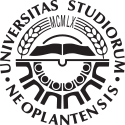Predavanje dr Predraga Lažetića, Univerzitet u Batu, Velika Britanija
| Vreme | 30. novembar 2023. 13:00 |
|---|
30. novembar, svečana sala (114/1) u 13 časova
Using creative methods to research across difference – examples, potentials and limitations
Within the research methods literature, the term ‘creative methods’ is typically used to refer to an approach that enables people to express themselves in non-verbal ways (Gauntlett, 2007), often used in combination with more traditional methods such as interviews and focus groups. Mannay (2016) (drawing on Pauwels, 2011) suggests that creative methods can be categorised under one of three approaches. First, researchers can focus on a variety of ‘found’ materials. While this has been a well-established approach within the disciplines of history, art and archaeology, it is also now frequently used in the social sciences. Here, emphasis is placed on the importance of analysis and interpretation, rather than creation and production. Examples include the analysis of the visual content of: school websites and marketing materials (e.g. Wilkins, 2012); posters promoting sexual health (e.g. Jewitt, 1997); and fanzines produced by young women (e.g. Harris, 2004). Second, projects may be built around ‘researcher-initiated productions’ (Mannay, 2016), in which researchers are positioned as image-creators – for example, taking photographs of tattoos (Jacobson & Luzatto, 2004); sketching the layout of shared housing (Heath & Cleaver, 2004); and filming classroom interactions (Baines, Rubie-Davies, & Blatchford, 2009). Third, participants may be involved in more participatory ways, where the researcher acts as facilitator. Such approaches have included: documentary-making with young people (e.g. Blum-Ross, 2013); running photography workshops with refugees (e.g. Finney & Rishbeth, 2006); and playdough modelling with school children (e.g. Ingram, 2011). This third strand of work has become increasingly popular over the past decade or so, informed by a concern to give research participants more control over how their lives are represented, facilitate the involvement of those who may be less confident speaking or writing, and enable exploration of topics that may be too sensitive to talk about (Heath, Brooks, Cleaver, & Ireland, 2009).
Source: Rachel Brooks, Anu Lainio & Predrag Lažetić (2020) Using creative methods to research across difference. An introduction to the special issue, International Journal of Social Research Methodology, 23:1, 1-6, DOI: 10.1080/13645579.2019.1672281
In this interactive session, Dr Predrag Lažetić, one of the editors of the special issue on creative and visual methods within International Journal of Social Research Methodology (Brooks, Lainio and Lažetić., 2020) will present and discuss the examples of different use of creative and visual methods in his own field of education sociology and comparative social science. The session will be focused on presentation of examples of creative methods used in various contemporary studies and in particular within large comparative research project about higher education students in Europe called Eurostudents. The presentation will outline some of the research results gained through the use of creative and visual methods followed by discussion about their methodological potentials and limitations. The session to all social scientists and students interested in social science methodology as well as comparative educational and sociological research.
Dr Predrag Lažetić is an assistant professor (lecturer) at the Department of Education at the University of Bath in the United Kingdom. He is also an alumnus of the Faculty of Philosophy at the University of Novi Sad. His particular interests are in the field of labour market outcomes of higher education graduates, youth underemployment and unemployment, and socio-economic determinants of participation in specific study programmes and levels of education. His other research area are higher education students and the ways they are constructed by policy, institutions and especially through visual means of photographs and websites. Previously he worked as a research fellow at the Department of Sociology at the University of Surrey within European Research Council funded project Eurostudents. He worked also as the director of the Centre for Education Policy in Belgrade (2009-2013) as well as the research associate at the University of Kassel in Germany.


